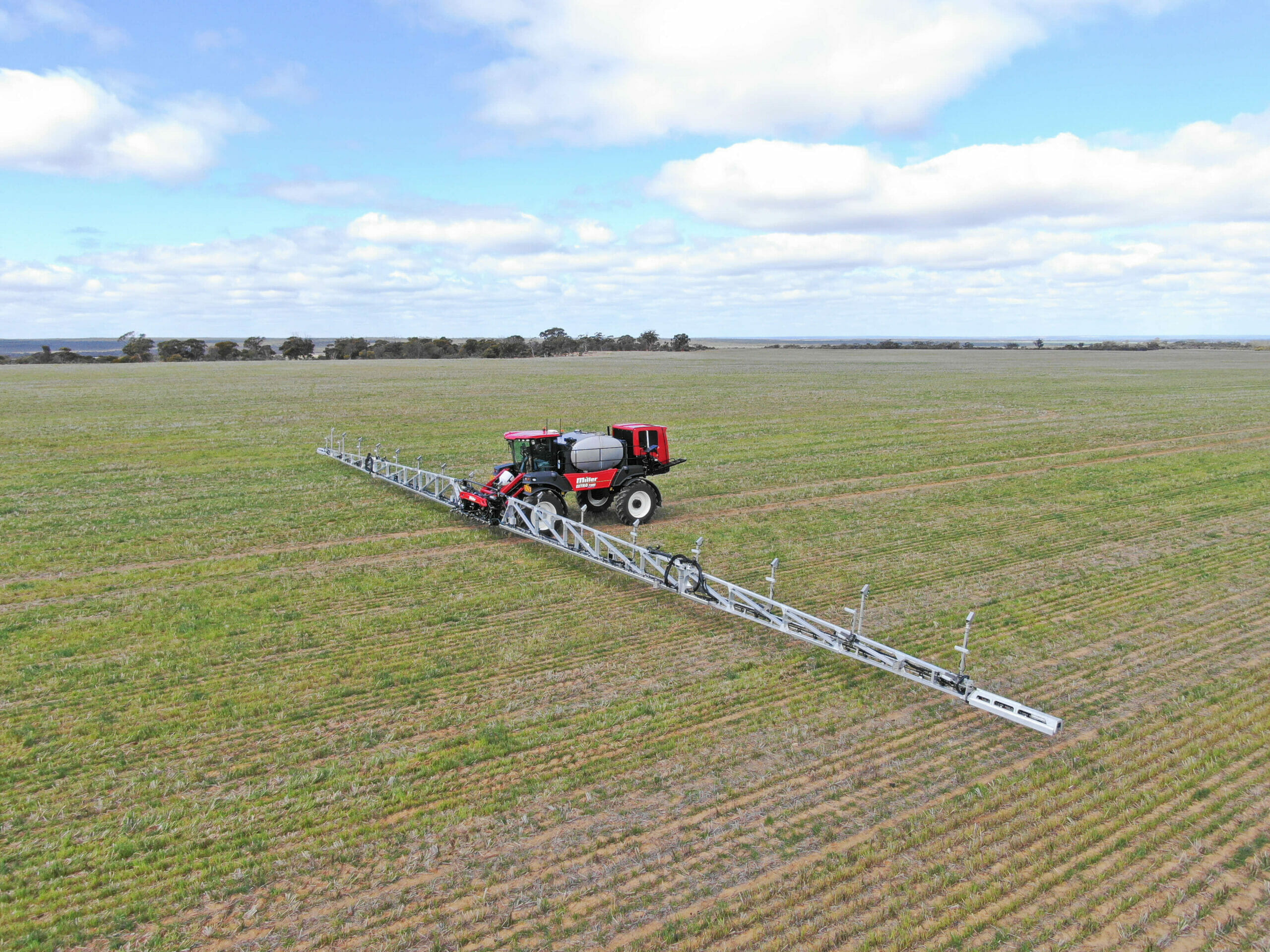
The latest Miller Nitro 7000 series sprayers with Bilberry ‘green-on’green’ weed identification technology are now rolling in the northern Wheatbelt
The first Bilberry “Green-on-Green’’ spot spraying systems installed on Miller Nitro 7000 Series sprayers are hitting the ground in WA’s northern and eastern wheatbelt regions.
Demand for the Miller 7000 Series sprayers has been exceptionally strong right across the country and interest in adding the Bilberry Green-on-Green weed identification option with them has been growing rapidly, particularly with the rising cost of chemical inputs.
The Bilberry Intelligent Spot Spraying System uses an embedded camera network, artificial intelligence and deep learning software to identify weeds in-crop or in Green-on-Green applications.
The high speed, high-definition cameras are installed at 3-metre intervals along the booms to scan paddocks and the company’s weed recognition algorithms are constantly evolving to ensure specific weeds are precisely targeted with the appropriate herbicide in real time.
The technology is currently used for broadleaf weeds in wheat, barley and oat crops along with blue lupins in lupin crops. Broadleaf break crops and pastures will soon be available.
Green-on-Green trials with the Bilberry Intelligent Spot Spraying System have shown an average hit and kill rate of 80 per cent, as well as chemical savings of up to 90pc.
The system fully integrates with Miller’s electronics and is available on the Miller truss booms up to 41.5m and the 48m Pommier boom. This full integration also allows users to easily change from spot to blanket spraying.
In addition to the hardware investment, growers pay a subscription to the Bilberry Intelligent Spot Spraying System either per hectare or on an annual basis with unlimited hectares. This also incorporates all software updates and performance improvements.
The Bilberry system complements the existing Trimble WeedSeeker 2 spot spraying system offered with the Miller sprayers that uses reflected light technology.
Meanwhile, the high demand for the Miller 7000 Series Nitro machines is putting stocks under pressure for this season and into 2023, with interested growers encouraged to indicate their intentions as soon as possible, also considering the opportunity to secure orders at current pricing.
Peter Vella, National Miller Sales Manager with Australian distributor, McIntosh Distribution, said user-friendly operation of some of the most sophisticated application technologies in the agricultural spraying industry was driving the increased sales and enquiry.
“Despite the array of application technologies and systems available, the Miller sprayers have remained really easy to use, especially now with features like the latest one-touch auto-folding,’’ Peter said.
“There are not too many things you have to do to go spraying and it means it is easy for multiple operators. Experienced and inexperienced operators will find it simple and easy to understand.’’
